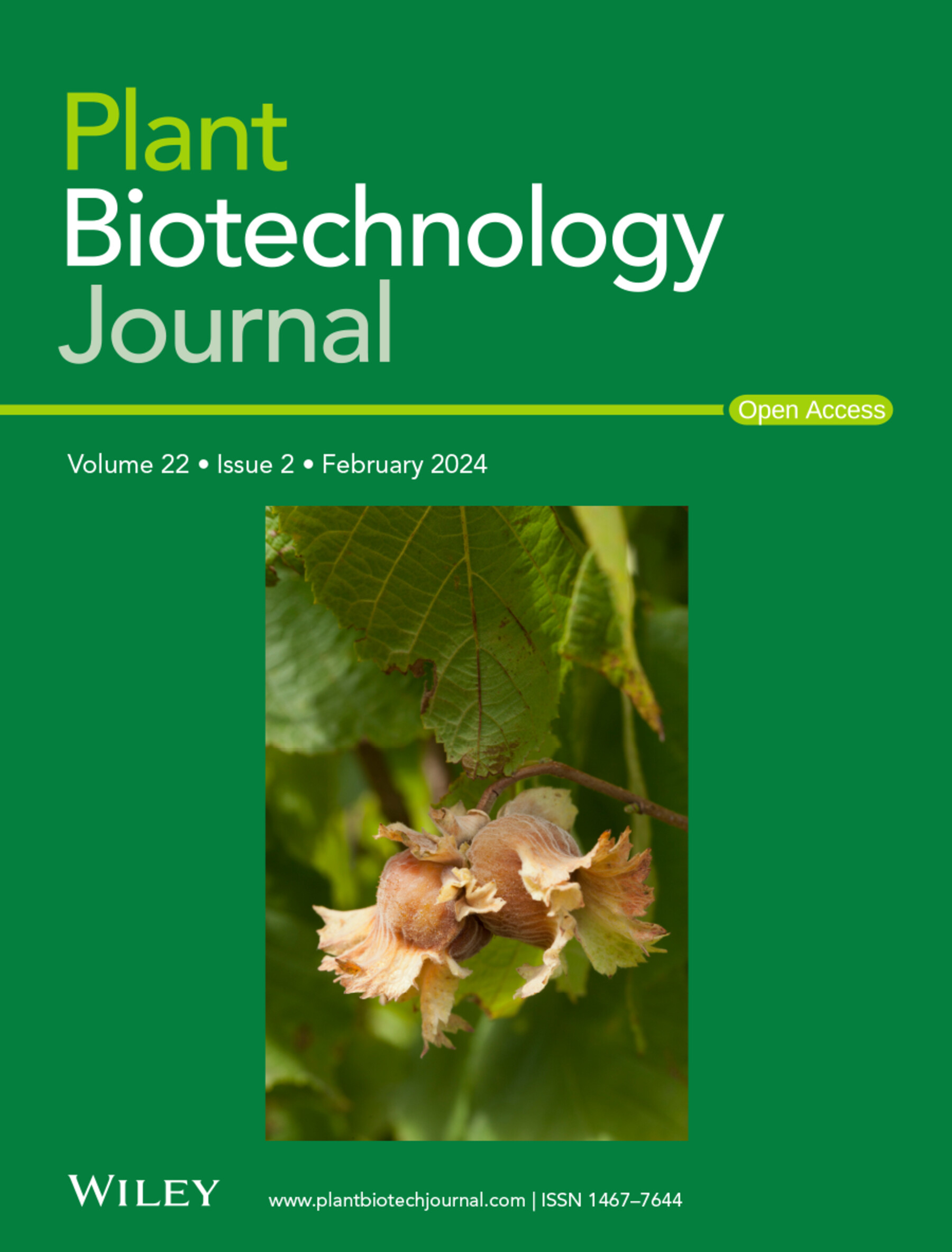Two tandem R2R3 MYB transcription factor genes cooperatively regulate anthocyanin accumulation in potato tuber flesh
IF 10.1
1区 生物学
Q1 BIOTECHNOLOGY & APPLIED MICROBIOLOGY
引用次数: 0
Abstract
Anthocyanin biosynthesis and accumulation determines the colour of tuber flesh in potato (Solanum tuberosum) and influences nutritional quality. However, the regulatory mechanism behind anthocyanin biosynthesis in potato tuber flesh remains unclear. In this study, we identified the Pigmented tuber flesh (Pf) locus through a genome-wide association study using 135 diploid potato landraces. Genome editing of two tandem R2R3 MYB transcription factor genes, StMYB200 and StMYB210, within the Pf locus demonstrated that both genes are involved in anthocyanin biosynthesis in tuber flesh. Molecular and biochemical assays revealed that StMYB200 promotes StMYB210 transcription by directly binding to a 1.7-kb insertion present in the StMYB210 promoter, while StMYB210 also regulates its own expression. Furthermore, StMYB200 and StMYB210 both activated the expression of the basic helix–loop–helix transcription factor gene StbHLH1 and interacted with StbHLH1 to regulate anthocyanin biosynthesis. An analysis of the StMYB210 promoter in different diploid potato accessions showed that the 1.7-kb insertion is associated with flesh colour in potato. These findings reveal the genetic and molecular mechanism by which the Pf locus regulates anthocyanin accumulation in tuber flesh and provide an important reference for breeding new potato varieties with colourful flesh.求助全文
约1分钟内获得全文
求助全文
来源期刊

Plant Biotechnology Journal
生物-生物工程与应用微生物
CiteScore
20.50
自引率
2.90%
发文量
201
审稿时长
1 months
期刊介绍:
Plant Biotechnology Journal aspires to publish original research and insightful reviews of high impact, authored by prominent researchers in applied plant science. The journal places a special emphasis on molecular plant sciences and their practical applications through plant biotechnology. Our goal is to establish a platform for showcasing significant advances in the field, encompassing curiosity-driven studies with potential applications, strategic research in plant biotechnology, scientific analysis of crucial issues for the beneficial utilization of plant sciences, and assessments of the performance of plant biotechnology products in practical applications.
 求助内容:
求助内容: 应助结果提醒方式:
应助结果提醒方式:


